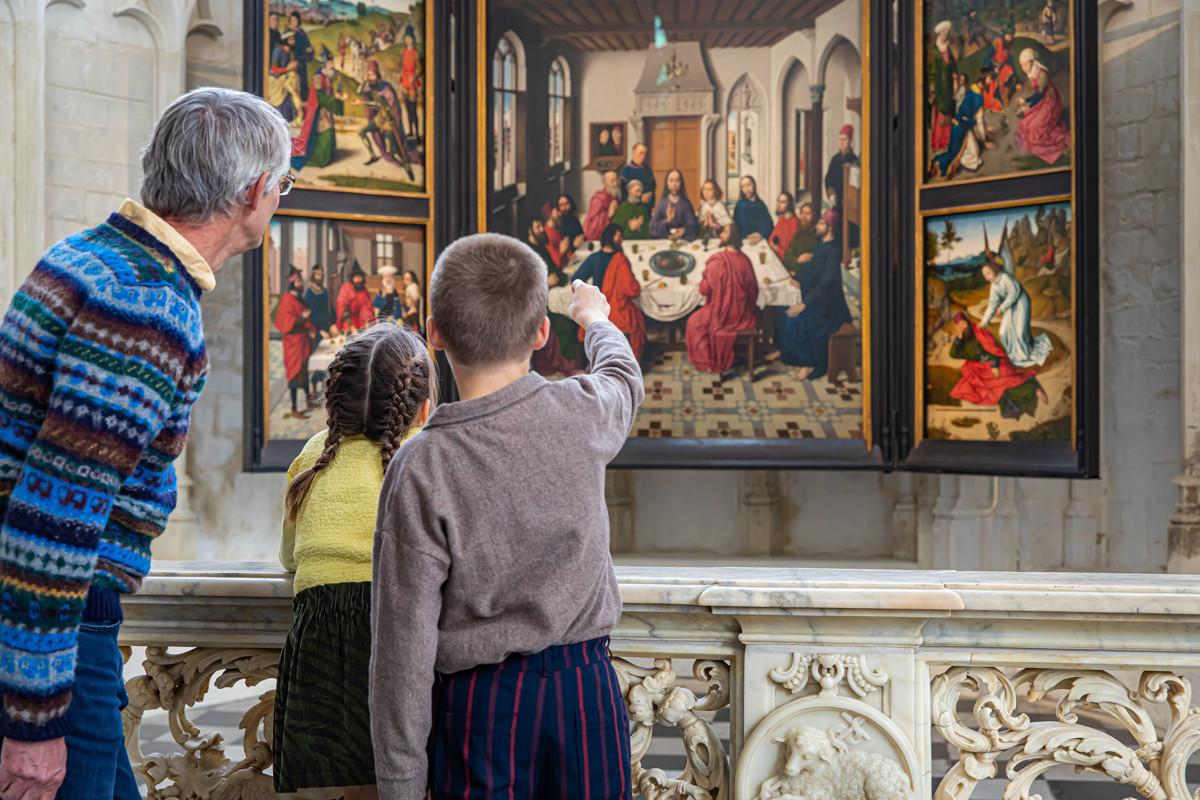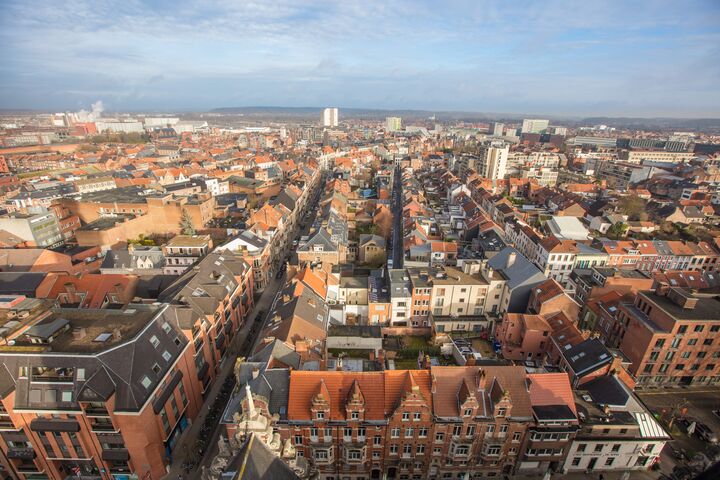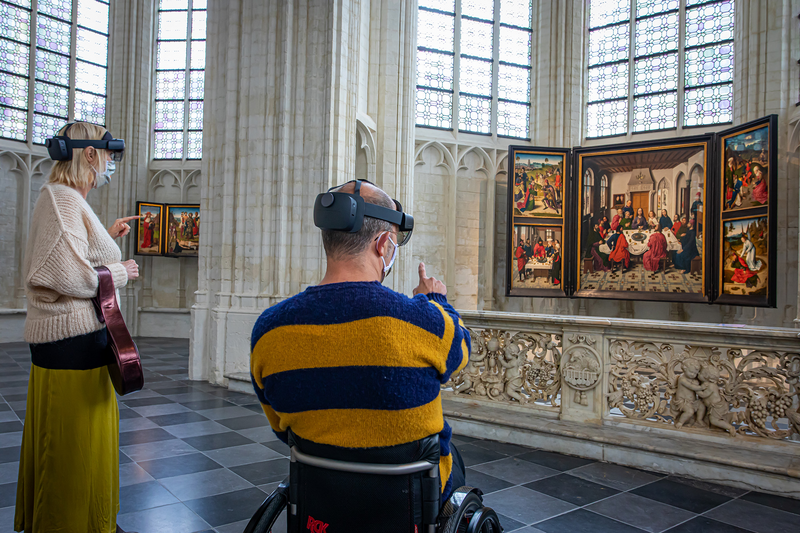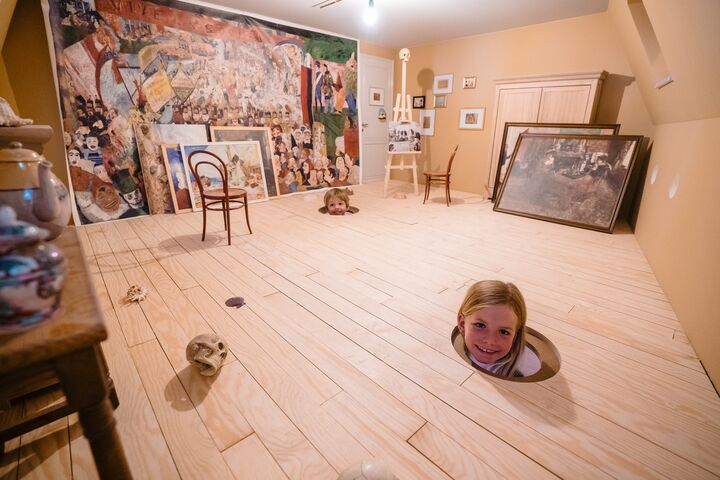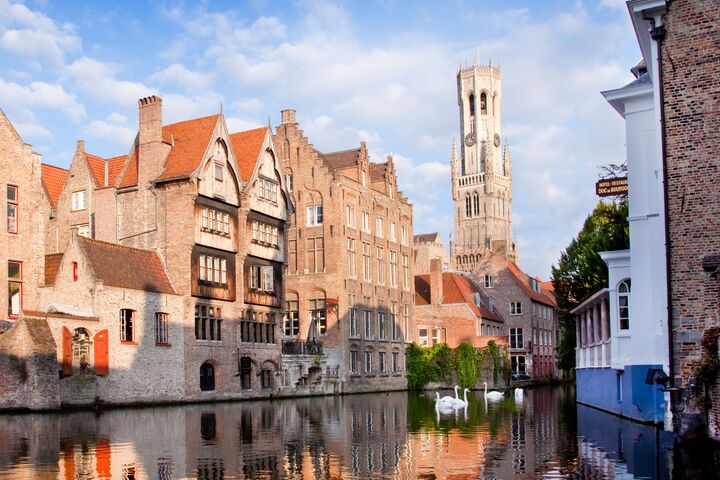Dieric Bouts is at home in Leuven. You can find this Flemish Primitive all over the world, but it only in his home city of Leuven that you really get to know him. Discover his legacy in St. Peter's Church or M Leuven.
There is a veil of mystery surrounding Dieric Bouts, one of the most important Flemish Primitives. His collection of work speaks volumes, but much less is known about his life. Where was he born? Probably in Haarlem, in present-day Netherlands. Although we are not entirely sure. When did he first see the light of day? Sometime around 1415, that is all we know. Why did he move to Leuven? There is no definitive answer to that.
What is clear however: Bouts was above all a resident of Leuven, even though he was not born there. His name first appeared in the well-preserved city registers in 1448. Then he married Catharina van der Brugghen, a wealthy aristocrat's daughter. Together they had four children. Bouts built his personal life in Leuven and his career also took off there. He painted an impressive collection of masterpieces and was appointed city painter of Leuven in 1472. A testament to his status.
In Leuven, Bouts became a grand master. You can even say that he grew and flourished together with his city. When he arrived there, in the middle of the 15th century, Leuven was experiencing enormous economic and cultural development. The University of Leuven, one of the oldest in Europe, had just been founded. The first stone of the impressive Gothic town hall had just been laid. The construction of St. Peter’s Church was about halfway through.
Once completed, it would play an essential role in Bouts’ legacy. He painted his magnum opus The Last Supper with that church in mind. We see Christ and his apostles together around the table. Through the pointed arch windows in the background, we see Leuven’s Grote Markt. An extraordinary piece of realism. You can see the same view through the windows of the real church. A clearer connection between painter and city is hard to find.
In the same church, you can find a second Bouts masterpiece: The Martyrdom of St Erasmus. Together with The Last Supper, today, almost 600 years later, it still adorns the place for which it was created. During the city’s New Horizons festival - more on that below - this set up will temporarily change. In the context of the exhibition Dieric Bouts. Creator of Images, two masterpieces have temporarily moved from St. Peter’s Church to the museum M Leuven. There they form the backbone of this exhibition. By mid-January 2024, they will be returned to their familiar spots in St. Peter’s Church.
And there is more, M Leuven offers another insight into the life and work of the Flemish Primitive. In 2019, the museum acquired the painting Christ crowned with thorns at an auction at Christie’s in New York. The canvas was created around 1470 in Bouts’ workshop. The high quality of this painting demonstrates that Bouts himself was closely involved in its creation.
It is extraordinary. Although the work of Dieric Bouts is spread across the most important museums in the world, it is only in Leuven that you get really close to the master. In St. Peter's Church, he and his paintings are at home forever.
In the coming months, Leuven will be putting Dieric Bouts in the spotlight, with the city festival New Horizons. M Leuven welcomes you to the retrospective exhibition Dieric Bouts. Creator of Images. This will be complemented by a educational and engaging programme throughout the City.
Visit city Festival New Horizons in Leuven from 22 September 2023 to 14 January 2024.
